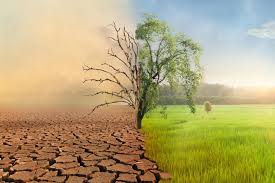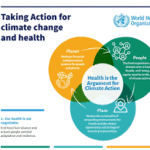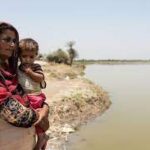The Impact of Climate Change on Public Health in Africa

Climate change is no longer a distant threat—it is a present reality with serious consequences for Africa’s health and wellbeing. Rising temperatures, unpredictable rainfall, desertification, and extreme weather events are not only disrupting food systems and livelihoods but also creating major public health challenges. From malnutrition to the spread of infectious diseases, Africa’s most vulnerable populations—children, women, and rural communities—are at the greatest risk. Understanding these challenges and preparing effective responses is vital for protecting the continent’s future.
How Climate Change Threatens Public Health in Africa
1. Food Insecurity and Malnutrition
Erratic rainfall, droughts, and flooding reduce agricultural yields, leading to food shortages. Malnutrition weakens immune systems, increases child mortality, and hinders economic productivity. For example, the Sahel region faces chronic food insecurity, putting millions at risk of undernutrition.
2. Spread of Infectious Diseases
Warmer temperatures expand the breeding grounds for mosquitoes and other vectors. This increases the risk of malaria, dengue, and yellow fever outbreaks. Rising humidity and flooding also promote waterborne diseases such as cholera and typhoid.
3. Heat Stress and Cardiovascular Risks
Urban centers like Lagos, Nairobi, and Johannesburg face intense heatwaves, increasing risks of heatstroke, dehydration, and cardiovascular diseases. Workers in agriculture, construction, and transportation are especially vulnerable.
4. Mental Health Strain
Displacement from floods, droughts, and crop failures causes stress, anxiety, and depression. Climate-induced migration also disrupts community structures, leaving families vulnerable to trauma and social instability.
5. Weak Healthcare Systems
Many African countries already struggle with limited healthcare resources. Climate-related health challenges add pressure, stretching facilities beyond capacity and reducing access to timely treatment.
Building Resilience: Strategies for Health and Climate Adaptation
1. Investing in Climate-Smart Agriculture
Using drought-resistant crops, improved irrigation, and sustainable farming practices can stabilize food supply and reduce malnutrition.
2. Strengthening Disease Surveillance
Expanding early warning systems for malaria, cholera, and other climate-sensitive diseases helps governments and communities respond quickly.
3. Improving Urban Planning
Green spaces, heat-resilient housing, and better waste management can reduce heat stress and pollution-related illnesses in cities.
4. Expanding Healthcare Access
Training health workers, equipping rural clinics, and investing in mobile health technology will improve resilience against climate-related diseases.
5. Community Education and Awareness
Teaching communities about climate risks, safe water practices, and disease prevention empowers individuals to protect their health.
Africa’s Opportunity for Change
While climate change poses severe threats, Africa also has a unique opportunity to lead in climate-health solutions. Investing in renewable energy, sustainable farming, and climate-resilient infrastructure will not only reduce emissions but also create jobs and improve wellbeing. Partnerships between governments, NGOs, businesses, and communities are essential to scale these solutions.
Conclusion
Climate change is a health crisis as much as it is an environmental one. For Africa, the stakes are particularly high—millions of lives depend on urgent and coordinated action. By combining innovation, policy reform, and community resilience, Africa can turn this challenge into an opportunity to safeguard health, reduce inequality, and secure a healthier future.
Written by Fawzi Rufai, Medically Reviewed by Sesan Kareem



